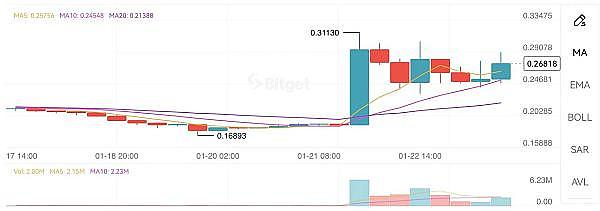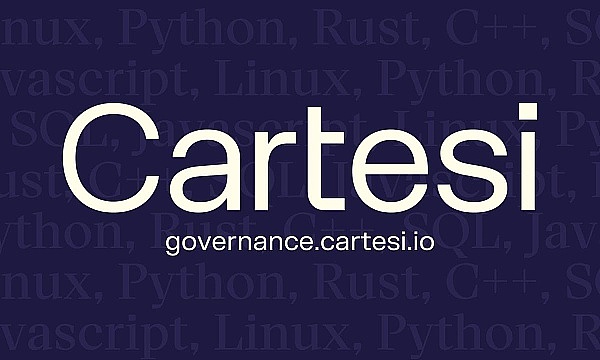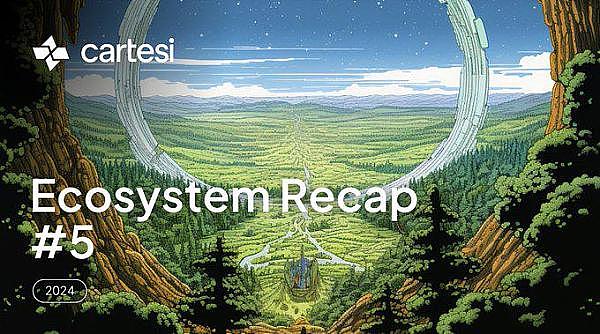On January 22, 2024, the market performance of Cartesi (CTSI) was eye-catching. On the day, CTSI’s price reached $0.2398, placing it at 246th place in the cryptocurrency market. Even more remarkable is that it achieved a staggering 30.2% increase in 24 hours, and in the past 7 days, the increase also reached 15.2%. Such market dynamics not only demonstrate Cartesi's strong momentum, but also indicate its potential market influence.

Cartesi's market value has reached approximately US$184.6 million, and its fully diluted valuation (FDV) is as high as approximately US$239.5 million. On this day, Cartesi’s 24-hour trading volume reached $273.4 million. This figure not only reflects the market’s high attention to Cartesi, but also shows its activity and liquidity in the cryptocurrency field.
Behind these data, Cartesi shows great potential and market appeal. Next, we’ll dive into what Cartesi is and why it stands out in the ever-changing cryptocurrency market.
Supporting Dapps to run in the Linux environment without high gas fees and low latency, Cartesi leads cost-effective innovation on the chain
Cartesi, as an off-chain decentralized computing platform, has occupied a prominent position in Layer 2/3 infrastructure. Its biggest feature is that it supports decentralized applications (dApps) in the Linux environment. Run without being limited by the computing power and high transaction fees of the blockchain main chain. This feature allows complex computing tasks to be performed off-chain, avoiding the computing bottlenecks and related costs of the blockchain.

Cartesi's innovation also lies in its ability to avoid complex calculation processes that lead to high transaction fees while ensuring the verifiability of dApps and smart contracts on the underlying blockchain. This provides users with a platform to run efficient, scalable smart contracts and develop dApps using mainstream software stacks. Cartesi’s approach means that although its smart contracts operate outside of the blockchain’s base layer, they still enjoy the security protections of the blockchain.
Cartesi has a wide range of application scenarios, especially in data model training and on-chain game infrastructure. Its gas cost savings provide new opportunities for the development of open source games, such as integrating game libraries such as Werewolf into Cartesi VM. In addition, Cartesi’s backend is programmed in Python, making it easy for non-Solidity developers to create dApps.
Cartesi’s leadership team is composed of many senior experts. CEO and co-founder Erick de Moura has held software development related positions at WiNGs Telecom, Arizona Bay, and WebRadar. Joining him are computer graphics professor, co-founder and chief technology officer Diego Nehab, as well as chief strategy officer Augusto Teixeira and chief operating officer Colin Steil.
These characteristics and team background of Cartesi demonstrate its potential as a blockchain technology innovator and herald its future development direction in the field of decentralized computing. .
Introduction to economic models and application scenarios: Through Cartesi Machine, CISI can be used on multiple chains such as Ethereum
CTSI, the native token of the Cartesi platform, has a total circulation of 1 billion. These tokens are carefully allocated across multiple key areas, forming the economic backbone of the Cartesi ecosystem. The following introduces the distribution ratio of CISI:
1. Launchpad sales: In April 2020, Cartesi sold 1% of the total supply through the Launchpad of Binance Exchange 10% of tokens.
2. Mining Reserve: 25% of the total supply is classified as mining reserve, aiming to reward mining activities. Specific details can be found in the transparency report Check.
3. Foundation reserves: About 40.22% of the tokens are allocated to the foundation for the research, development, and marketing of the Cartesi blockchain operating system , community building, business operations, development grants and legal expenses.
4. Seed round sale: 2% of the tokens will be used for seed sales. This process is planned to last until October 23, 2022.
5. Private placement: accounting for 5% of the total supply of CTSI.
6. Strategic sales: accounting for 0.67% of the total supply, fully allocated.
7. Team: Team tokens account for 15% of the total supply, of which approximately 4.29% have been distributed through previous unlocks.
8. Advisors: Advisor-specific tokens account for 2.11% of the total supply.

As of April 2024, the unlocking progress of CTSI tokens has reached 88%, of which 115.38 million CTSI are still locked, accounting for 11.54%. The unlocked portion is 884.62 million CTSI, accounting for 88.46%.
In the Cartesi ecosystem, the CTSI token plays multiple key roles:
1 . Pledge mechanism: Users can pledge CTSI on the Cartesi network, participate in the consensus mechanism, maintain blockchain security, and receive CTSI rewards.
2. Transaction fees: CTSI is used to pay transaction fees within the Cartesi ecosystem, including smart contract execution and asset transfer.
3. Acquisition of computing services: CTSI tokens are used to obtain computing services of the Cartesi platform, especially off-chain computing functions.
4. Governance participation: CTSI holders can participate in platform governance and participate in protocol upgrades and improved decision-making by voting.
5. DApp interaction: CTSI is used to interact with decentralized applications built on Cartesi.
6. Incentives: CTSI encourages developers and users to contribute to the Cartesi ecosystem, including building and deploying DApps, maintaining network security and participating in community activities.
CTSI token is not only the economic cornerstone of the Cartesi ecosystem, but also the embodiment of its versatility and flexibility. It plays an integral role in everything from transaction processing to cybersecurity and governance and is a key factor driving the growth and adoption of the Cartesi platform. In addition, thanks to the versatility of Cartesi Machine, CTSI is able to run on multiple blockchain platforms including Ethereum, Polygon and Arbitrum.
The technical advantages are not highlighted, and CISI token selling pressure is huge: Cartesi’s future is uncertain?
Cartesi, despite being innovative in the blockchain space, faces some key challenges. Its programming features that support the Linux environment have not shown a competitive advantage despite the widespread popularity of Solidity.
From a token economic perspective, more than 11% of CTSI tokens have not yet been unlocked, which may lead to selling pressure in the market. However, with the imminent launch of Cartesi Rollups and its first dApp Honeypot, Cartesi’s potential as a Layer 2 project is beginning to attract attention and the current valuation may be undervalued.
Cartesi's future will depend on the practical application of its technological innovation, the maturity of its ecosystem, and market acceptance. For followers, it will be key to pay close attention to its subsequent development, especially technical performance and ecological development.
 JinseFinance
JinseFinance
 JinseFinance
JinseFinance Edmund
Edmund JinseFinance
JinseFinance Kikyo
Kikyo Hui Xin
Hui Xin Alex
Alex Bitcoinworld
Bitcoinworld Coinlive
Coinlive  Nansen
Nansen Cointelegraph
Cointelegraph